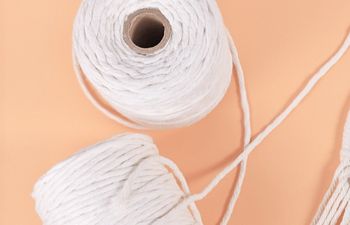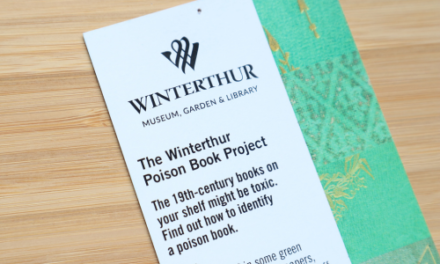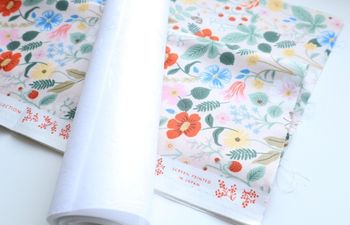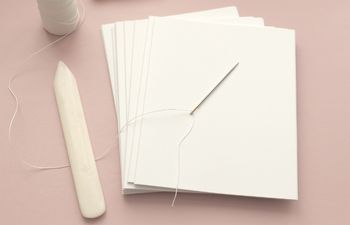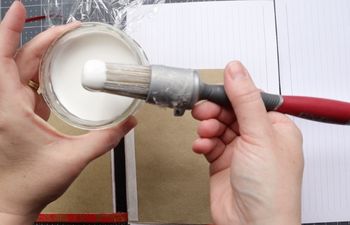If you ask about bookbinding cord, you’ll get a hundred different opinions. Some people will tell you to skip the critical thinking and just use good ol’ gardening twine. Others will tell you to use cooking twine or simple jute rope. I respectfully disagree.
I’ve tried everything you can imagine. Through the process of trial and error, I learned there are several properties that make a cord good for bookbinding. If it doesn’t have all of these qualities, then it will make more work for me in the long term.
In this post, I’ll share these qualities, why they’re important and how they impact the bookbinding process. I’ll tell you which cord I use in my own bindery and where to find some online.
Warning: I’m a technical person, so there’s probably more info in this post about cord than you’d ever thought to learn in your life.
Before we begin, I want to clarify the differences between twine, cord and rope. These three words have caused many bookbinders a migraine (for good reason).
What’s the difference between Twine, Cord and Rope?
To paraphrase the actual definition of each term:
- Twine (can also be called “string”) is composed of single strands of fiber wound together to create a ply (single ply, 2-ply, 3-ply…)
- Cord is several ply strands twisted together
- Rope is several cords twisted or braided together to add diameter and strength
Twine, cord and rope are similar in that they can be made of the same fiber and build upon one another, but don’t let this fool you into believing they’re the same.
When it comes to marketing, companies love to use the word they think the consumer is looking for (even if the product isn’t exactly what the customer needs or wants).
Here’s a great example. This result popped up when I searched for “twine.” What is a consumer to think if they see “Linen Cord Twine”? Twine and Cord are not the same thing. Twine is twine and cord is cord. Whether the advertisement was dynamically created to include my search term (“twine”) or not doesn’t matter. It’s confusing as hell. Always read the product description before buying and you should be okay!
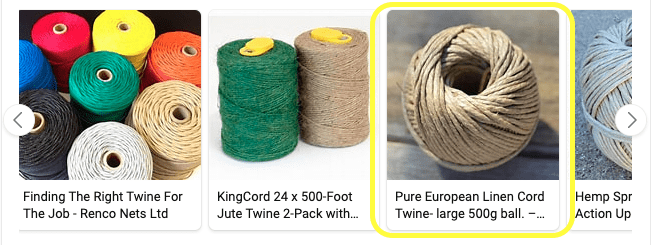
When do bookbinders use twine vs. cord vs. rope?
I can’t speak for others, but I only use twine or cord in my bindery. I’ve never had a need for rope.
Since twine is a bit thicker than sewing thread, I use it to tie up leather bindings while they set or to create small cores for headbands. Cord is perfect for everything else (sewing supports, standard headband cores, spacer cards, etc.).
3 Features to look for in a good bookbinding cord
Now that we have some clarity on terms and use, let’s get to the point of this post. Which qualities make for a good bookbinding cord?
Fiber
In bookbinding, we talk a lot about 100% cotton and 100% linen. While the terms may be used interchangeably, they’re not the same.
100% cotton is made from – you guessed it – the cotton plant. Alternatively, 100% linen is made from the flax plant. While both are strong, cotton is considered softer but more durable. Linen is coarse, but also more supportive.
Since cord is usually used as a sewn support in bookbinding, it makes sense to go with 100% unbleached, unwaxed, minimally processed linen fiber for most books.
Twist tightness & ply
Ply
Cord is usually sold by the ply (3-ply, 4-ply, 5-ply, etc.). In my experience, buying a larger ply is better. I buy a 5 or 10-ply cord and pull it apart to whatever size is needed for my project. Any extra is kept around to create headband cords or spacer cards.
Twist tightness
In my experience, a well-twisted cord is easier to sew and work with overall. I don’t necessarily need a super tight twist, but I do look for one with as little fray as possible. Less fray means there is less to get in the way while sewing and weaving through boards.
The 100% linen cord I prefer
My standard choice for bookbinding cord is 100% linen. Both of the brands below work wonderfully. While one has a tighter twist than the other, they will both work very well as a binding support. I personally use C&D brand because it is very affordable. When I’m working on a special project (usually one with sewn-in cords), I will pull out the sparkly Garniture brand.
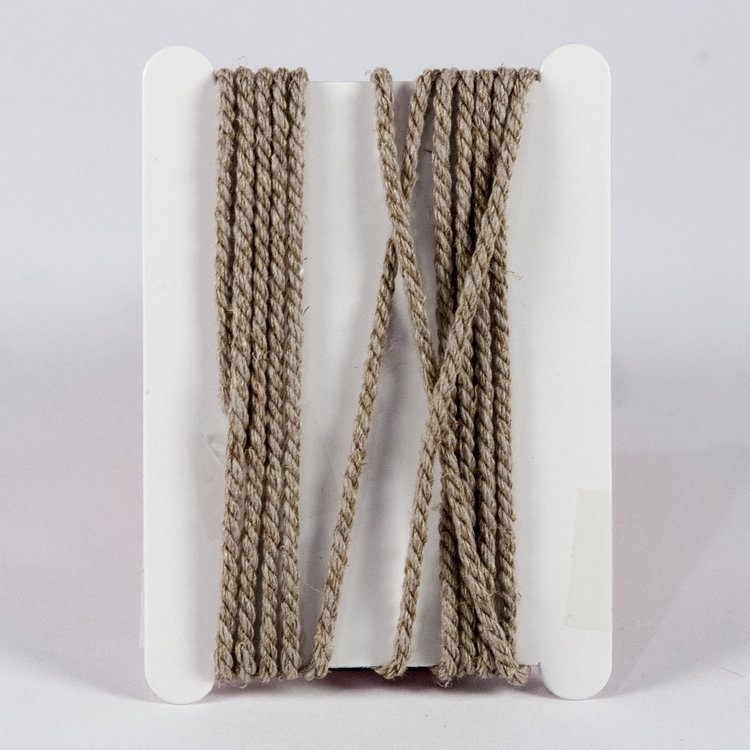
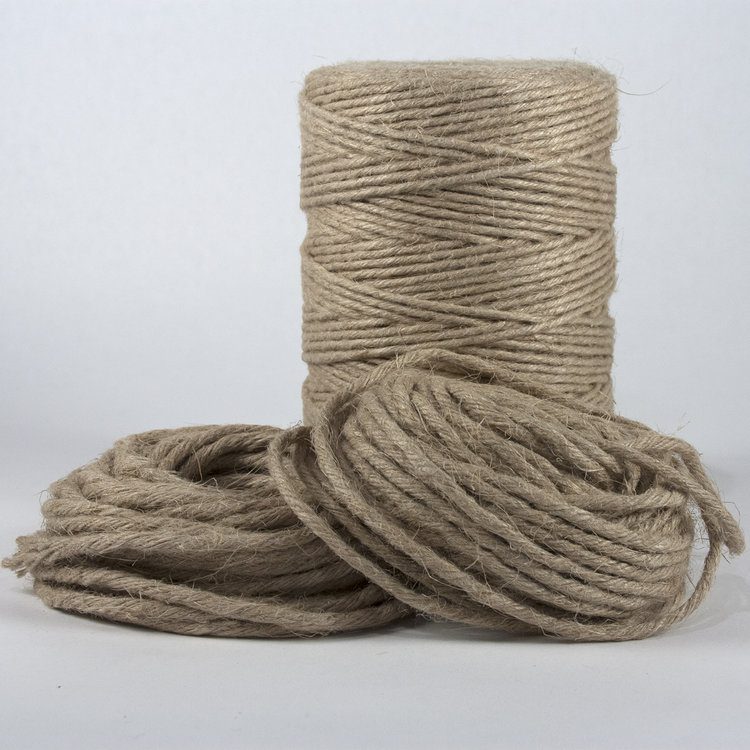
Garniture 100% linen cord costs about $151 for 110 yards. To make it more affordable, Colophon Book Arts sells Garniture for $2.75 per 2-yard package.
In Summary
100% cotton and 100% linen are both strong, durable cord options. Cotton is considered softer and may not provide as much support, so most bookbinders prefer the coarser alternative, linen, for their projects.
Check out the Garniture brand and C&D brand cords mentioned above from Colophon Book Arts.
Best of luck to you as you look for the perfect bookbinding cord for your next project!
More bookbinding goodness
✨ What tools do I need to get started bookbinding?
- Bookbinding Tools & Supplies Quick Start Guide – learn all about book making tools, which to buy first & where to go online
- Pick up my popular Complete Starter Bookbinding Tools Kit – all the bookbinding essentials in one spot
🌟 Looking for a simple way to start making books?
Try a Complete Book Materials Kit. Each one has everything you need (+ tutorials & videos) to make a beautiful book without all the fuss.
Thank you for taking me along on your book making journey!
Misty
